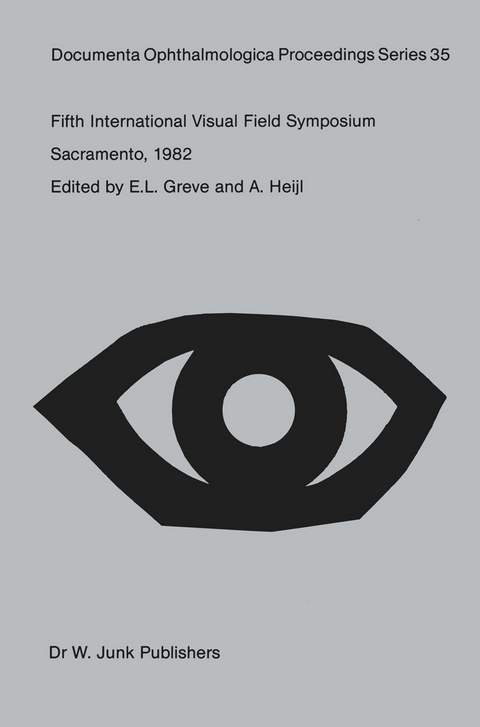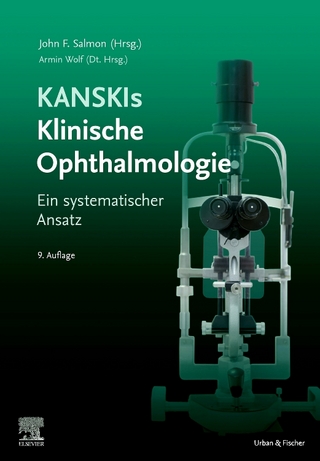
Fifth International Visual Field Symposium
Kluwer Academic Publishers (Verlag)
978-90-6193-731-9 (ISBN)
- Titel z.Zt. nicht lieferbar
- Versandkostenfrei innerhalb Deutschlands
- Auch auf Rechnung
- Verfügbarkeit in der Filiale vor Ort prüfen
- Artikel merken
Glaucoma: Correlation of disc, retinal nerve fiber layer and visual field.- Correlation of the peripapillary anatomy with the disc damage and field abnormalities in glaucoma.- The first observable glaucoma changes after an optic disc haemorrhage.- Correlation between computerized perimetry and retinal nerve fibre layer photography after optic disc haemorrhage.- Kinetic quantitative perimetry of retinal nerve fiber layer defects in glaucoma by fundus photo-perimeter.- The relation between excavation and visual field in glaucoma patients with high and with low intraocular pressures.- Computer-generated display for three-dimensional static perimetry: correlation of optic disc changes with glaucomatous defects.- Correlation between the stereographic shape of the ocular fundus and the visual field in glaucomatous eyes.- The relationship between a circumlinear vessel gap at the neuroretinal rim and glaucomatous visual field loss.- Fluorescein angiographic defects of the optic disc in glaucomatous visual field loss.- Capillary hyperpermeability of the optic disc and functional evolution in glaucoma.- Optic disc changes with the progression of glaucomatous visual field damage.- Optic disc analysis by computerized image subtraction and perimetry.- Discussions.- Glaucoma: Visual field and low-tension glaucoma.- A comparative study of visual fields of patients with low-tension glaucoma and those with chronic simple glaucoma.- Comparison of glaucomatous visual field defects in patients with high and with low intraocular pressures.- The visual field defects of low-tension glaucoma (A comparison of the visual field defects in low-tension glaucoma with chronic open angle glaucoma).- Visual fields in low-tension glaucoma, primary open angle glaucoma, and anterior ischemic optic neuropathy.- Discussions.- Glaucoma: General.- Deterioration of threshold in glaucoma patients during perimetry.- Constancy of sensitivity in time in patients with open angle glaucoma: Further results.- Discussion.- The effect of a number of glaucoma medications on the differential light threshold.- Time resolution in glaucomatous visual field defects.- The location of earliest glaucomatous visual field defects documented by automatic perimetry.- The course of early visual field change in glaucoma as examined by pupillographic perimetry.- Ergo-perimetry.- The occupational visual field. I. Theoretical aspects: the normal functional visual field.- Functional scoring of the binocular visual field.- The representation of the visual field.- Investigations on space behaviour of glaucomatous people with extensive visual field loss.- Correlations between peripheral visual function and driving performance.- Non-linear projection in visual field charting.- Discussion.- Neuro-ophthalmology.- Methodological aspects of contrast sensitivity measurements in the diagnosis of optic neuropathy and maculopathy.- Visual fields versus visual evoked potentials in optic nerve disorders.- Homonymous quadrantanopia in a case of multiple sclerosis (Pupillographic, perimetric and VEP findings).- Hippocrates and homonymous hemianopsia.- Carotid perfusion and field loss.- Anterior ischemic optic neuropathy and associated visual field changes.- Computer-assisted perimetry results in neuro-ophthalmology problem cases.- Properties of scotomata in glaucoma and optic nerve disease: computer analysis.- Statistical analysis of normal visual fields and hemianopsias recorded by a computerized perimeter.- Visual fields in the management of unexplained visual loss: A cost-benefit analysis.- Quantitative isopter constriction under image degradation by defocus.- Visual field defect in thalamic hemorrhage.- Discussions.- Automated perimetry.- Clinical experiences with a new automated perimeter ‘Peritest’.- Some possibilities of the Peritest automatic and semi-automatic perimeter.- New programs of the Scoperimeter.- Automated perimetry in aviation medicine (Visual field examination in 2500 flying personnel).- Angioscotoma: preliminary results using the new spatially adaptive program SAPRO.- The accuracy of screening programs.- Special Octopus software for clinical investigation.- Discussion.- Optimization of computer-assisted perimetry.- Automation of the Goldmann perimeter.- Preliminary examination of the Squid automated perimeter.- An evaluation of the Baylor semi-automated device.- The estimation and testing of the components of long-term fluctuation of the differential light threshold.- General topics.- Lateral inhibition in the fovea and parafoveal regions.- Extrafoveal Stiles’ ? mechanisms.- Loss of inhibitory mechanisms as a measure of cone impairment: A method applied in static colour perimetry.- Perimetric techniques used to assess retinal strain during accommodation.- Static fundus perimetry in amblyopia: Comparison with juvenile macular degeneration.- The visual field in alternating hyperphoria.- Temporal resolution in the peripheral visual field.- Temporal resolution and stimulus intensity in the central visual field.- Diabetic retinopathy: Perimetric findings.- Static perimetry in central serous retinochoroidopathy (Masuda’s type) using a fundus photo-perimeter.- Boundary curves for dividing visual fields into sectors corresponding to a retinotopic projection onto the optic disc.- The role of perimetry in retinal detachment.- Computer analysis of kinetic fielddata determined with a Goldmann perimeter.- Perimetric changes caused by ethyl alcohol.- Leukocytoclastic vasculitis associated with bilateral central field loss; improvement on corticosteroids and mercaptopurine.- Three-dimensional display of static perimetry.- The relationship between visual acuity, pupillary defect and visual field loss.- Ophthalmoscopic perimetry.- Discussions.
| Erscheint lt. Verlag | 31.10.1983 |
|---|---|
| Reihe/Serie | Documenta Ophthalmologica Proceedings Series ; 35 |
| Zusatzinfo | 516 p. |
| Verlagsort | Dordrecht |
| Sprache | englisch |
| Themenwelt | Medizin / Pharmazie ► Medizinische Fachgebiete ► Augenheilkunde |
| ISBN-10 | 90-6193-731-0 / 9061937310 |
| ISBN-13 | 978-90-6193-731-9 / 9789061937319 |
| Zustand | Neuware |
| Haben Sie eine Frage zum Produkt? |
aus dem Bereich


